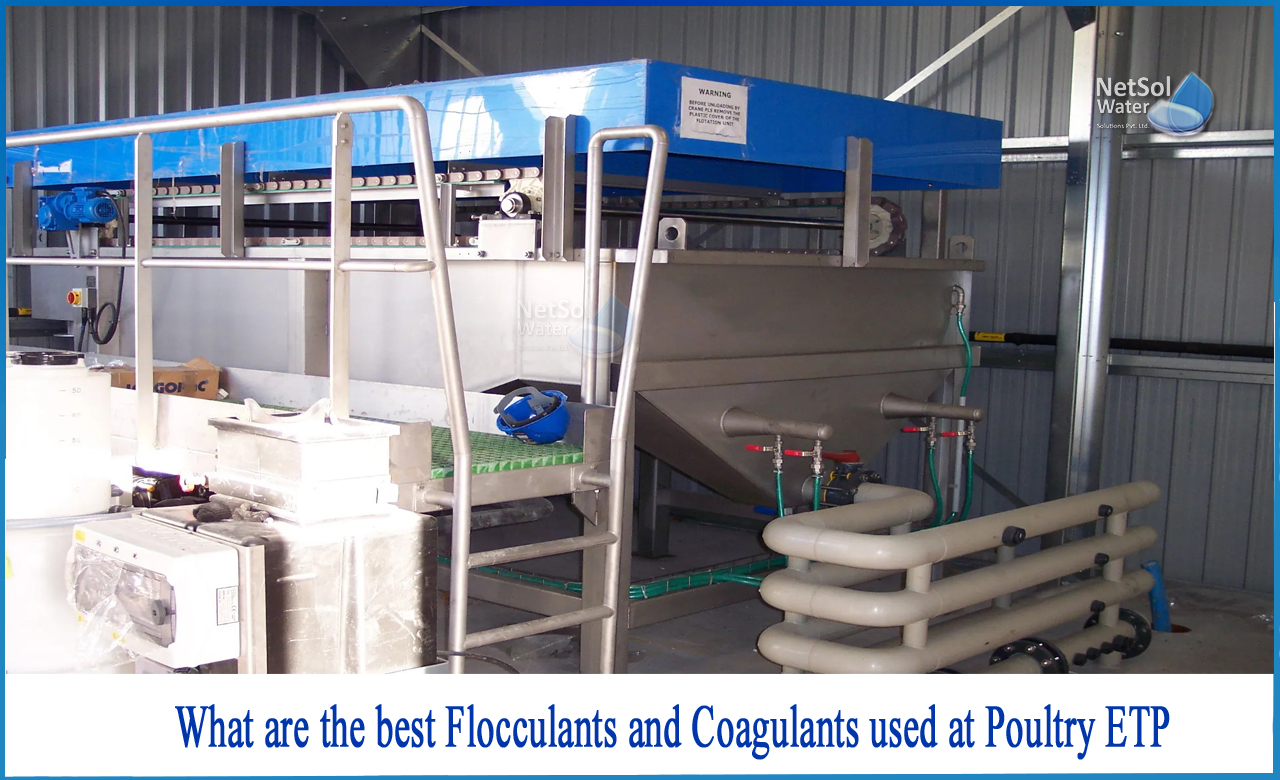What are the best Flocculants and Coagulants used at Poultry ETP?
Coagulation and flocculation are important phases in both drinking water and wastewater treatment. They offer a dependable method for reducing water turbidity (the cloudiness or haziness of a fluid that is usually imperceptible to the naked eye), which is an important indicator of water quality. In wastewater treatment, they can reduce suspended particles and organic loads by up to 90%.
Coagulation and flocculation are two distinct processes that are utilized in tandem to overcome the forces that keep suspended particles in place. While coagulation neutralizes the charges on the particles, flocculation allows them to bind together and grow in size, allowing them to be removed from the liquid more easily.
Characteristics of poultry wastewater in an ETP
Prior to any wastewater treatment, it is necessary to describe the wastewater utilizing instruments and test reagents to demonstrate pollutant levels.
1: pH, COD, BOD, total organic carbon (TOC), total suspended solids (TSS), total nitrogen (TN), total phosphorus (TP), and pathogens are some of the metrics often used to describe poultry effluent.
2: COD measures the amount of organic components in wastewater; a high COD level shows that the wastewater contains a lot of oxidizable organic molecules.
3: Similarly, BOD denotes the biological oxidation of organic substances, and a high BOD level in wastewater denotes vast amounts of organic contaminants.
4: TN and TP are the nutrients found in wastewater; nitrogen is found in both organic and inorganic forms in wastewater, with nitrite (NO2) and nitrate (NO3) being the most common. The most stable form of nitrogen in water is nitrate, which is formed through the natural decomposition of living materials. Excess nitrates in wastewater can cause severe algal blooms, oxygen depletion, fish poisoning, and stench.
5: Furthermore, the most frequent kind of phosphorus in wastewater is orthophosphate (PO43), which comes from disinfectants and cleaning agents; excessive phosphorus components in wastewater can cause eutrophication. Chemical precipitation is a simple and effective method for reducing phosphorus in wastewater.
Due to a variety of characteristics, such as system type, operation manner, and processing capacity, these parameters differ from one poultry farm to the next.
Why treatment is needed at poultry effluent treatment plants?
Aneffluent discharged from poultry plants contains a mixture of processing water from both the slaughtering line and the gut cleaning, resulting in a wide range of organic matter concentrations. Organic matter is the major pollutant in slaughterhouse effluents. Paunch, faeces, fat and lard, grease, undigested food, blood, suspended material, urine, loose meat, soluble proteins, excrement, manure, grit, and colloidal particles all contribute to the organic load in these effluents. Untreated slaughterhouse waste entering a municipal sewage treatment system can cause serious problems due to the high levels of (BOD) and other contaminants.
As a result, cleaning slaughterhouse wastewater is critical to avoiding significant organic loading in municipal wastewater treatment plants.Fine screening, sedimentation, coagulation– flocculation, trickling filters, and activated sludge processes are the most prevalent ways for treating slaughterhouse wastewaters.
What are the appropriate flocculants and coagulants for a poultry effluent treatment facility, and how much of each should be used?
Alumin?um Sulphate and ferric chloride are the two most frequent coagulants. Both are metallic cations that are trivalent (+3).
Aluminum Sulphate doses typically range from 8 mg/l to 30 mg/l. It works best when the pH level is between 6.5 and 7.5. It is substantially more expensive than ferric chloride.
Ferric chloride dosages vary from 20 mg/l to 40 mg/l. Ferric chloride works in a significantly broader pH range.
For poultry ETP, ferric sulphate combined with the proper polymer is an effective coagulant.
Ferric sulphate is a granular primary coagulant made up of trivalent iron (Fe+3) that can be dissolved to provide an iron concentration of 10% to 11.8%. This coagulant works well in a wide pH range and does not have the operational issues that ferric chloride does.
Technical assistance provided by Netsol_
Netsol Water collaborates with a wide range of international organizations to tackle complicated water and wastewater problems by strategically integrating modern treatment technology with practical solutions.
Think of us when it comes to wastewater management for your poultry, adapted to your specific needs! We use a cost-effective method to reuse and recycle water, as well as deal with us for wastewater treatment equipment’s and develop your business while complying with Environmental standards.
Reach us by phone at +91 9650608473 or by email at enquiry@netsolwater.com.



